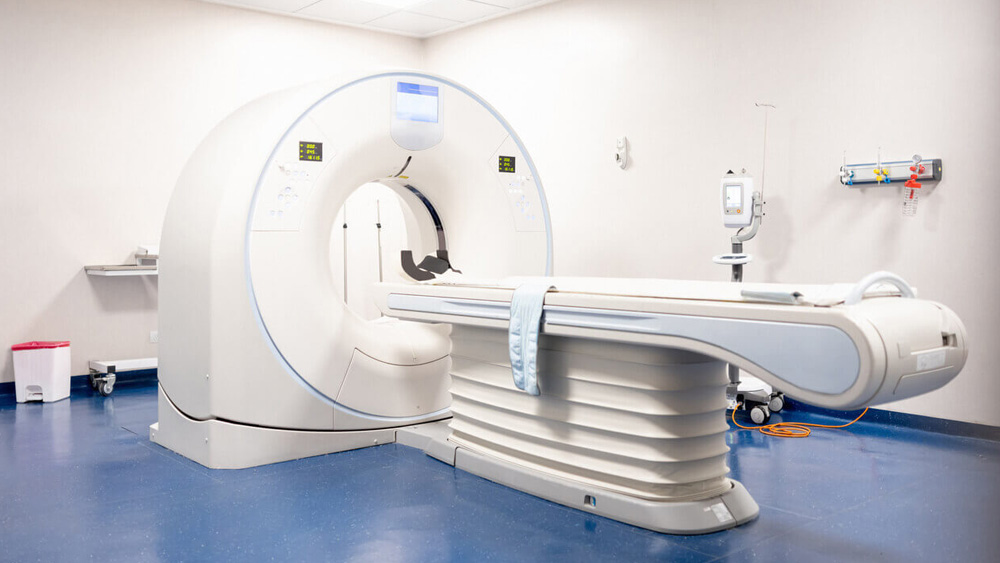MRI Scan: How It Works and What to Expect
1. Introduction:
MRI (Magnetic Resonance Imaging) is a non-invasive imaging technique that uses strong magnetic fields and radio waves to create detailed images of the body’s internal structures. Unlike X-rays or CT scans, MRI does not use ionizing radiation.
2. Purpose:
An MRI scan is used to diagnose and evaluate:
- Brain and spinal cord disorders (e.g., stroke, tumors, multiple sclerosis)
- Joint and musculoskeletal problems (e.g., ligament tears, arthritis)
- Abdominal and pelvic conditions (e.g., liver, kidneys, uterus, prostate)
- Heart and blood vessel diseases
- Tumors and cancer staging
3. Procedure:
- The patient lies on a table that slides into a cylindrical MRI scanner.
- The machine uses magnetic fields and radio waves to capture images.
- The scan typically takes 30–60 minutes, depending on the area being examined.
- Loud tapping or thumping noises are common; earplugs or headphones are provided.
4. Preparation:
- Wear comfortable clothing without metal objects (zippers, jewelry, or belts).
- Remove any electronic devices, credit cards, or hearing aids.
- Inform your doctor if you have metal implants, pacemakers, or a history of kidney disease.
- If contrast dye is needed:
- Do not eat or drink for 4–6 hours before the scan.
- Inform the technician of any allergies or prior reactions to contrast agents.
- A Serum Urea and Creatinine Test may be required before the scan to assess kidney function, as contrast dye can affect kidney health.
5. MRI Contrast:
- Contrast agents (usually Gadolinium-based) enhance image clarity.
- They help highlight blood vessels, tumors, and inflammation.
- Administered through an IV injection before or during the scan.
- Generally safe, but mild side effects like nausea or dizziness may occur.
- Patients with kidney problems should consult their doctor before receiving contrast.
- Serum Urea and Creatinine Test: This test helps evaluate kidney function to ensure the safe use of contrast dye, as impaired kidney function can lead to complications.
6. During the Test:
- You must lie still to avoid blurry images.
- The machine will make loud knocking sounds; this is normal.
- You may be given instructions to hold your breath briefly.
- A call button is available to communicate with the technician if needed.
7. After the Test:
- Normal activities can be resumed unless advised otherwise.
- If contrast dye was used, drink plenty of fluids to flush it out.
- Results are typically available within 24–48 hours and will be reviewed by your doctor.
8. FAQs:
- Is MRI painful?
No, it is a painless procedure. - Is MRI safe?
Yes, but patients with metal implants should consult their doctor. - Can I have an MRI if I am pregnant?
Yes, MRI is generally safe during pregnancy as it uses no radiation, but contrast dye should be avoided unless essential. - How long does the MRI take?
Usually between 30–60 minutes. - Are there any risks with MRI contrast?
Serious reactions are rare, but mild side effects may occur. - Why is a Serum Urea and Creatinine Test needed?
This test ensures that your kidneys can safely process the contrast dye, reducing the risk of complications.
For any concerns or specific instructions, consult your doctor or radiology center.
